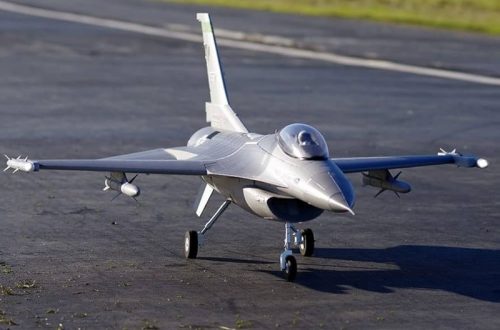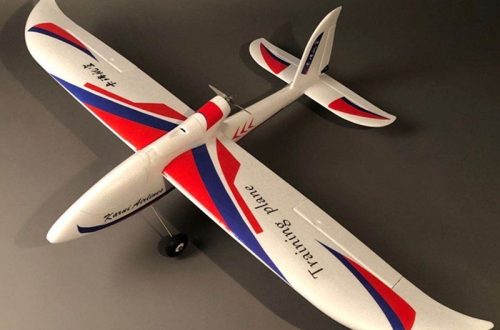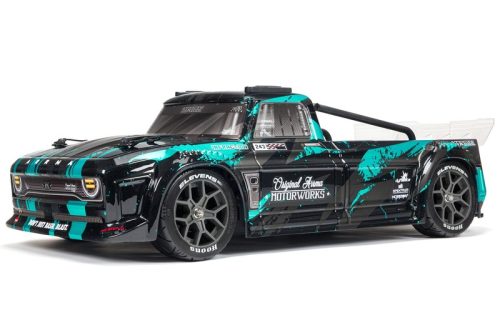Introduction to RC Touring Car Racing
Radio-controlled (RC) touring car racing is a thrilling hobby that combines speed, skill, and strategy. Whether you’re a rookie or a seasoned pro, understanding the basics of RC touring car racing is crucial. These miniature vehicles are replicas of full-size touring cars. They race on tracks that mimic their larger counterparts, with tight turns and long straights.
RC touring cars are electric or fuel-powered, equipped with four-wheel drive for better traction and handling. Getting into this hobby means you’ll be part of an exciting community where you can sharpen your driving techniques and mechanical skills. Focus on learning the ropes, choosing the right gear, and fine-tuning your vehicle will lead you to success. We’ll cover the must-know tips and techniques throughout this blog, from building your first car to advanced competitive racing.
Essential Equipment for RC Touring Car Racing
To get started in RC touring car racing, you need the right equipment. The essentials include the RC touring car itself, a suitable transmitter and receiver, batteries or fuel, a charger (for electric cars), and a basic toolkit for repairs and adjustments. Let’s dive into each of these critical items.
RC Touring Car
Choose a model that fits your skill level and budget. Beginners might opt for a ready-to-run (RTR) model, while experienced racers may prefer a kit to customize their car.
Transmitter and Receiver
A reliable radio system is vital for precise control. Look for transmitters with adjustable settings to refine your driving experience.
Batteries or Fuel
Electric RC touring cars need high-quality batteries for the best performance. Nitro cars require specific fuel and maintenance.
Charger
For electric cars, a fast and dependable charger ensures your batteries are race-ready.

Toolkit
Invest in quality tools. They will help you assemble your car, perform routine maintenance, and make trackside repairs.
Having these essential pieces of equipment will set you on the path to becoming an adept RC touring car racer.
Building Your First RC Touring Car: Step-by-Step Guide
Building your first RC touring car can be an exhilarating yet daunting task. Follow this simple step-by-step guide to get started on the right foot.
- Select Your Model: Decide between an RTR model for a quick start or a kit for customization. Factor in your skill level and budget.
- Assemble Your Kit: If you choose a kit, follow the manual closely. Double-check part fits and alignments as you build.
- Install Electronics: Carefully position and secure the motor, ESC (electronic speed control), and servos. Then, connect them to the receiver.
- Test System Functions: Before securing the body, test all electronic components. Ensure your steering and throttle are reacting as they should.
- Attach the Body: Once everything checks out, mount the body onto the chassis. Make sure it’s snug and properly aligned.
- Wheel Installation: Attach the wheels, ensuring they freely spin and the axles are not overly tight.
- Final Inspection: Go over your car once more. Check screws for tightness and alignment of components.
- Bench Testing: Run the car on a stand to ensure smooth operation of the drivetrain and electronics.
By carefully following these steps, your first RC touring car will be ready for action. Remember to take your time and enjoy the process. Building is just as much a part of the racing experience as hitting the track.
Tuning Your RC Touring Car for Optimal Performance
Optimizing your RC touring car’s performance is crucial for competing at a higher level. Here are step-by-step tips to get the most out of your vehicle.
Suspension Adjustments
Start by tuning the suspension. This affects how the car grips the track and handles turns. Adjust springs and dampers for desired stiffness and rebound. A stiffer setup may suit smooth tracks, while a softer setting can help on bumpy courses.
Gear Ratio Fine-tuning
Alter your car’s gear ratio to suit track conditions. A higher gear ratio boosts top speed and is good for tracks with long straights. A lower gear ratio increases acceleration, perfect for courses with tight turns.
Electric System Optimization
For electric RC touring cars, ensure your motor and ESC settings match. Adjusting throttle response can lead to smoother acceleration. Keep batteries charged and check for consistent power delivery.

Aerodynamic Adjustments
Fine-tune your car’s aerodynamics with wing angles and body positioning. Small changes can reduce air resistance or increase downforce, improving stability at high speeds.
Tire Balancing and Alignment
Balance your tires to prevent uneven wear and vibrations. Correct alignment reduces tire drag and enhances handling. Check and adjust both toe and camber settings regularly.
By making these adjustments, you can significantly improve your RC touring car’s performance on the track. Regular tuning ensures your car is always race-ready and competitive.
Advanced Driving Techniques for Competitive Racing
Competitive RC touring car racing demands mastery beyond basic driving skills. Enhancing your technique with advanced driving strategies can give you an edge. Here are key tactics to conquer the track.
Understanding Racing Lines
The racing line is the path that offers the shortest lap time. Aim to find the line with the least resistance and highest speed. This often means entering turns wide, hitting the apex, and exiting wide.
Braking and Throttle Control
Flawless throttle and brake control are vital for maintaining speed through turns. Practice smooth application and release of both to avoid skidding or spinning out. It’s about balance and timing.
Cornering Mastery
Turn entry, apex, and exit—are crucial for cornering. Work on cutting corners tightly without losing grip. A mix of precise steering and throttle control makes this possible.
Anticipating Opponents’ Moves
In races, predicting other racers’ actions can save crucial seconds. Watch their racing lines, braking points, and overtaking attempts. Use their behavior to your advantage.
Race Tactics
Understanding when to push hard and when to hold back is a skill. Use practice sessions to learn track specifics and apply them on race day. Know where you can overtake and defend your position.
Consistency in Lap Times
Consistent laps often win races. Work on repeating the same lines and controlling your pace each lap. This reliability can be more effective than occasional high speeds.
Improving these advanced driving techniques requires practice. Invest time in refining your skills, and you’ll see progress in your lap times and race placements. Combine these tips with a well-tuned car, and you’re on your way to becoming a formidable racer.
Maintenance and Care for RC Touring Cars
Regular maintenance is key to an RC touring car’s performance and longevity. Here’s how to keep your vehicle in top shape.
- Clean Your Car: After each race, clean off dirt and debris. Use a soft brush or compressed air.
- Check for Damage: Inspect the chassis, suspension, and wheels. Look for stress marks or cracks.
- Replace Worn Parts: Gears, bearings, and tires may wear out. Swap them out as needed.
- Battery Care: Store batteries properly. For NiMH, discharge them fully; for LiPo, store at 3.8V per cell.
- Update Firmware: If you run digital components, keep their firmware updated for best performance.
- Drive Train Maintenance: Lubricate gears and bearings to ensure smooth operation.
- Tighten Screws: Go over the car and tighten any loose screws. Vibration can loosen them over time.
- Check Electronics: Ensure all connections are secure. Look for any signs of wear on the wires.
Following a routine maintenance schedule will prevent most issues. Always perform a quick check before and after races. Be proactive rather than reactive with your RC touring car care.
Choosing the Right Tires and Batteries
Selecting the correct tires and batteries can make a substantial difference in RC touring car racing. Whether it’s the traction on the track or the consistency of the power supply, these components are crucial. Here are some guidelines to help you choose wisely:
Tires
Tires are your car’s sole contact with the track surface, so they largely influence grip and handling.
- Type: Choose between slicks for dry conditions and treaded for wet tracks.
- Compound: Soft compounds offer more grip but wear out faster. Hard compounds are more durable.
- Size: Ensure the size matches your vehicle for optimal performance.
- Tread Pattern: The right pattern helps in specific track conditions. Consult experienced racers or forums for advice.

Batteries
The battery is the lifeblood of an electric RC touring car, providing the necessary power.
- Type: NiMH batteries are heavier but simpler. LiPo batteries offer more power and run time but require careful handling.
- Capacity: Higher capacity means longer run times. Choose based on the length of your races.
- Voltage: Higher voltage batteries can increase your car’s speed and overall performance. Make sure to comply with race regulations.
- Quality: Invest in high-quality batteries to avoid power drops during a race.
Keep in mind that while performance is important, rules and regulations might apply. Always check your racing club or competition guidelines to ensure your equipment is compliant. Remember, practice with your chosen tires and batteries is essential to understand how they affect your RC touring car’s dynamics.
Joining RC Touring Car Racing Communities and Competitions
Entering the world of RC touring car racing extends beyond the track. It’s about joining a community. Engage with fellow enthusiasts and competitors. Here’s a rundown on how to get involved:
Finding Local Clubs
Start with local clubs in your area. They can be great places for advice and support. Look for clubs with active members. They often have scheduled race days and practice sessions. Use social media or search online forums for club listings.
Attending Events and Competitions
Once you’re comfortable, attend local events. They provide valuable race experience. You’ll learn a lot by watching how others handle their cars. Plus, it’s a chance to ask questions and get tips. Look for events that match your skill level.
Online Communities
Online forums and social media groups are full of RC racing fans. They discuss everything from car setups to race strategies. Join these groups to expand your knowledge and network. Share your experiences and learn from others.
Participating in Workshops
Some clubs and hobby shops offer workshops. These are great for learning new skills. They cover topics like car maintenance, tuning, and driving techniques. Attending workshops can boost your confidence and skills.
Racing at Higher Levels
As your skills grow, consider higher-level competitions. This may require traveling and more commitment. But, it opens up the chance to meet top racers and learn from the best.
By involving yourself in the RC touring car racing community, you prepare for success. You’ll meet people who share your passion and drive. Embrace the social aspect of this hobby. It will enrich your racing experience in exciting new ways.




